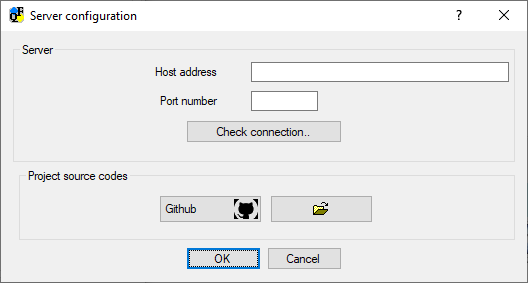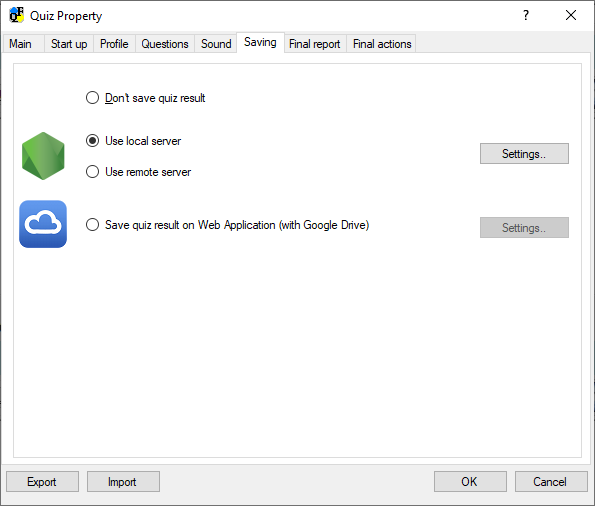Saving quiz results
To enable saving of quiz results, select the item Properties from the item of Quiz menu, and then clicking on sheet named "Saving".
The following dialog window will appear:
The quiz results can be saved in four different ways:
- Using a local (on your PC) or remote Node.js server . While the local server functionality is immediately available (once Node.js and MariaDB or MySQL are installed on your PC), the remote server functionality requires the distribution of sources, free and free, downloadable from the QuizFaber site, on the server machine (for example, in the laboratory, which may very well be a Linux machine) or on the site hosting a Node.js service (paid or free: Google Cloud, Microsoft Azure, Amazon's AWS, or others).
- Using the Google "cloud" environment , i.e. by creating a web application that saves the quiz results in a spreadsheet in your Google Drive account.
In this case the settings open a step-by-step wizard window to configure an initially empty spreadsheet on Google Drive to make it suitable for collecting the results of the quiz (the spreadsheet becomes an integral part of the web application created by you and distributed in Google).
Local Node.js server
In the case of a local server, you need to configure your PC (or a laboratory server) by installing two external software, Node.js for the server and MariaDB or MySQL for the database part. Then you can set up QuizFaber to use this platform. The "Settings" button opens a configuration wizard. Please refer to the chapter Local Server Installation (Node.JS and MariaDB / MySQL) .
Remote server Node.js
The remote Server platform is the same as the local server, however the configuration procedure will be done only in the remote service and will obviously depend on the service provider. Please refer to the chapter Deploying the QuizFaber Node.js server sources on the remote server.
The settings window for QuizFaber is very simple and is as follows:

Only two pieces of information are required, " address " which is host name or IP or URL of the service and the port number (which is optional, can be omitted).
The " Check Connection " button verifies that the remote server is responding or confirms that the deployment to the remote server was successful.For convenience, the "open folder" button allows direct access to the Javascript sources that must be distributed on the server or remote service.
